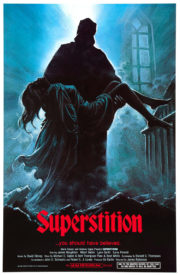The Phantom’s Silhouette against the Fog: A Critique of “Sleepy Hollow”
“The Hessian Horseman was a real man. His head was taken by a cannonball. They say he rides in every night in search of his head, always seeking, never stopping.” These ominous words echo through the grim, misty village of Sleepy Hollow, setting the mood for Tim Burton’s 1999 foray into the supernatural horror genre. Combining the dark visuals characteristic of Burton’s style with the macabre narrative of Washington Irving’s classic tale, “Sleepy Hollow” stands as a gothic horror film that is as visually stunning as it is eerily captivating.
A Eerie Ballet of Shadows and Light
Atmosphere and tone are the meat and drink of any horror story, and “Sleepy Hollow” serves them up with a lavish hand. With the ethereal quality of a bad dream, the movie wraps viewers in a world where the supernatural feels unsettlingly close to the surface. Burton meticulously crafts each frame, painting a picture of a world shrouded in fog and mystery. Suspense is masterfully built, not by an overabundance of jump scares, but rather through a pervasive sense of foreboding and an anticipation of horrors lurking unseen.
The spiraling smoke, unnerving stillness of the woods, and the contrast between the ash-colored village and the blood-red of the Horseman’s victims all heighten the sense of an otherworldly terror. Burton’s direction, embracing the grotesque alongside the beautiful, constantly tugs at the viewer’s sense of unease, never allowing them to settle comfortably into the narrative’s dark rhythm.
Painting Nightmares: The Cinematic Craft of “Sleepy Hollow”
Crucial to the haunting allure of “Sleepy Hollow” is its cinematography, a masterpiece of Emmanuel Lubezki’s camera work. Meticulously framed shots utilize lighting and color palettes to incredible effect, with Burton’s signature use of stark contrasts and moody lighting that makes every scene a piece of macabre artwork. The special effects, particularly the Horseman and his savage deeds, remain impressive even decades later, a testament to the prowess of practical effects in an age leaning towards digital.
The sound design and musical score by Danny Elfman work in tandem to weave a tapestry of auditory tension that draws viewers deeper into the film’s gothic atmosphere. The soundtrack, with its haunting melodies and intense crescendos, amplifies the sense of impending doom, while cleverly used sound effects and strategic silences startle and unnerve at unpredictable moments.
Headless Horseman and Haunted Hearts: The Core of Horror
Sleepy Hollow’s cast delivers performances that meld perfectly with the film’s atmosphere. Johnny Depp, as the skeptical yet faint-hearted Ichabod Crane, offers a refreshingly unheroic protagonist whose reactions oscillate between scientific curiosity and visceral fear. Christina Ricci as Katrina Van Tassel provides an ethereal presence, adding to the film’s dream-like quality. The actors, big and small, evoke a blend of period drama and horror cinema, adding layers to a film that relishes in the macabre.
The film tethers to its gothic roots, teasing out elements of the supernatural and psychological alike. The Headless Horseman is both a literal specter and a symbol of past sins returning to haunt the living, his rampage is a blood-soaked dance that is both jolting and yet grounded in a chilling narrative reality. It fits snugly into the conventions of its subgenre, using the supernatural not just for scares but as a storytelling device.
This movie leans on horror mechanics that fuel fear with a masterful blend of eerie environment and visceral violence. The methods used to frighten the audience set a balance between the shocking – decapitations and blood, and the psychological – the twisted family secrets and the mysteries of the town. These techniques are executed with such finesse that they leave an indelible impression on the viewer.
Underneath the layers of horror, “Sleepy Hollow” teems with themes of reason against superstition, the inescapability of truth, and the iniquities of the past haunting the present. These themes enrich the film, endowing it with depth beyond its outright terror and turning an entertaining horror romp into an experience that’s simultaneously thought-provoking and spine-chilling.
The Final Verdict: A Ride Worth Taking?
As a horror movie, “Sleepy Hollow” succeeds both aesthetically and narratively, crafting a darkly enchanting world that is sure to captivate with its chilling tale. It’s a film that delivers genuine fear while leaving room for the viewer to ponder its underlying messages. Fans of gothic horror, as well as those appreciative of Burton’s particular brand of cinematic craft, will find themselves ensnared by the spectral hands of “Sleepy Hollow”.
While the gruesomeness isn’t for the faint of heart, and some viewers might find the dated effects less convincing, the film remains a stimulating treasure of the genre. Comparatively speaking, Burton’s film carries echoes of the gruesome grandeur found in classics such as “Bram Stoker’s Dracula,” while preparing the ground for the eerie elegance in contemporary pieces like “Crimson Peak.”
In summation, “Sleepy Hollow” deftly weaves traditional horror with enchanting storytelling, making it a compelling watch for a wide range of viewers. With its equal parts of shadowy atmosphere, ghostly lore, and gory execution, this film stands firmly as a pillar in the cathedral of supernatural horror. Consider this an enthusiastic recommendation for those yearning for a hint of yesteryear’s specters mingled with the gore of turn-of-the-century horror cinema.




